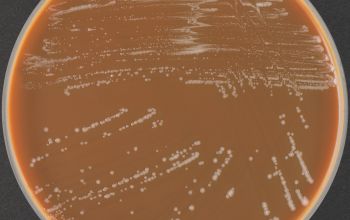YOUTUBE
A video of a boy with pertussis (whooping cough), demonstrating the cough's distinctive "whoop" sound.
US Center for Disease Control
Bordetella parapertussis
-
General information
Taxonomy
Family: Alcaligenaceae
Natural habitat
B. parapertussis, once thought to be strictly a human pathogen, is also found in sheep.
The bacterium is spread by airborne droplets, its incubation period is 7-14 days.
Clinical significance
B. parapertussis causes a pertussis syndrome similar to but usually less severe than that caused by B. pertussis
While B. parapertussis may be quite prominent in isolated outbreaks, overall is account for 2-20% of Bordetella isolates.
Symptomatic
B. parapertussis infections is more commonly present as a nonspecific cough illness or bronchitis.
Mixed infections
by B. pertussis and B. parapertussis have been reported, and this should be considered when examining primary cultures from clinical specimens.
Pertussis (or whooping cough) ⇒ see B. pertussis
-
Diseases
-
Gram stain
Very small Gram negative coccobacillus,
1-2 µm,
they appear singly or in pairs.
-
Culture characteristics
-
Obligate aerobic,
5-10% CO2 improves the growth
Regan-Lowe-medium
After 2-3 days the colonies become visible.
Colonies are very small, round, and domed (less domed) and appear silvery. (mercury-like-droplets)
BA no growth
after 3-6 days pinpoint colonies, produce zone of hemolysis
Regan-Lowe Charcoal Agar
plates are used for the isolation of B. pertussis.
It consist of charcoal agar as a basal medium supplemented with cephalexin to inhibit bacteria.
McConkey: no growth
(B. parapertussis = delayed)
BBAØ: no growth
Isolates
of B. pertussis and, less so, of B. parapertussis should not be subcultured because they undergo a phase change as described above.
If strains have to be stored, this should be done with primary clinical isolates, and these should be frozen in glycerol at -70ºC.
Biosafety level 2 is strongly recommended.
-
-
Characteristics
-
References
James Versalovic et al.(2011) Manual of Clinical Microbiology 10th Edition
Karen C. Carrol et al (2019) Manual of Clinical Microbiology, 12th Edition







